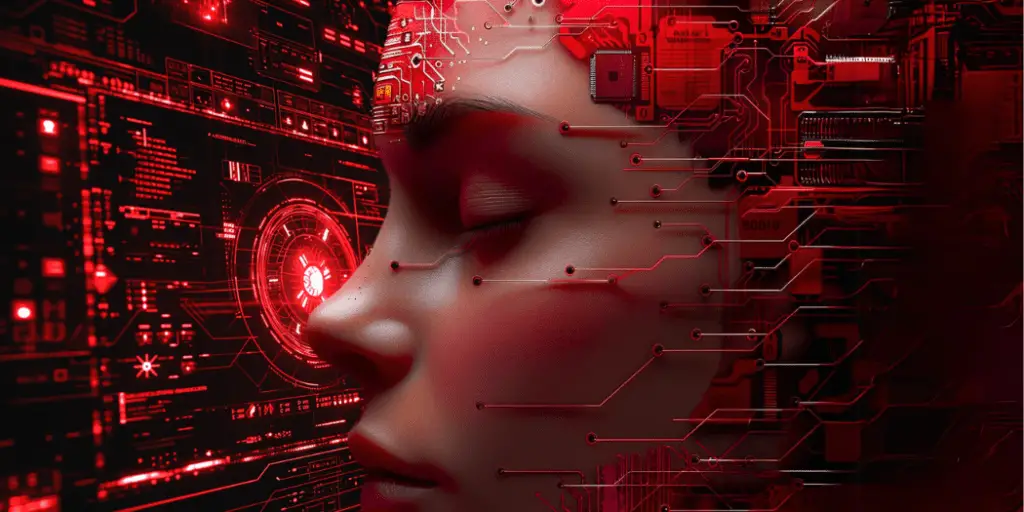Researchers at the University of Jyväskylä in Finland have developed a model that enables computers to interpret and understand Human Emotions.
This innovative model, grounded in principles of mathematical psychology, promises to bridge the gap between humans and intelligent technologies, enhancing the way we interact with our devices.
As artificial intelligence continues to evolve, the ability of computers to recognize and respond to human emotions could transform them from mere tools into empathetic partners, offering more intuitive and supportive user experiences.
Human Emotions Research
Spearheaded by Associate Professor Jussi Jokinen, the research leverages mathematical psychology to tackle one of the biggest challenges in human-computer interaction: the misalignment between users’ emotional states and the responses of intelligent systems.
The model is designed to predict a range of emotions, including happiness, boredom, irritation, rage, despair, and anxiety.
By simulating the cognitive evaluation process that generates these emotions, the model can anticipate how a user might feel in response to various scenarios.
This capability allows the computer to adjust its behavior accordingly, enhancing the overall user experience.
Jokinen’s team based their work on a theory that emotions arise from the cognitive assessment of events from multiple perspectives.

For instance, if a computer error occurs during a critical task, an inexperienced user might react with anxiety and fear.
In contrast, an experienced user might feel irritation. The model predicts these emotional responses by simulating how different users assess the same event.
The potential applications of this research are vast, offering new ways for technology to interact with us in more meaningful and empathetic manners.
By integrating this model into AI systems, computers could become more adept at recognizing and responding to our emotional states, ultimately making interactions smoother and less frustrating.
How the Model Works
The model developed by researchers at the University of Jyväskylä works by predicting a user’s emotional response based on the cognitive evaluation of events.
Grounded in emotional theory, it simulates how human cognition assesses situations to generate emotions.
This process involves several key steps. First, the model mimics how humans evaluate events from various perspectives to determine their emotional responses, assessing the significance of an event, the user’s goals, and the perceived control over the situation.
By analyzing this cognitive evaluation, the model predicts specific emotions such as happiness, boredom, irritation, rage, despair, and anxiety.
For example, suppose a user encounters a computer error during a critical task. In that case, the model evaluates the user’s experience level and the context to predict whether the user will feel anxious or irritated.
The model incorporates simulated user interactions to refine its predictions, understanding typical user behaviors and reactions to adjust its parameters for more accurate forecasts.
Once the model predicts an emotional response, it guides the computer to adapt its behavior accordingly.
If it predicts that a user is becoming frustrated, the computer might offer additional instructions, simplify the interface, or provide reassuring feedback to alleviate the user’s irritation.
This model can be integrated into various AI systems, enhancing their ability to relate to users on an emotional level.
Practical Applications
In everyday scenarios, this model can significantly enhance user experience by enabling computers to understand and respond to emotional cues.
For example, if a computer detects that a user is becoming frustrated or anxious during a task, it could offer additional instructions, simplify the interface, or provide calming feedback to ease the situation.
This technology can be particularly beneficial in customer service, where understanding and responding to a customer’s emotional state is crucial.
An AI system equipped with this model could detect if a customer is becoming upset and adjust its responses to be more empathetic and supportive, potentially diffusing tense situations and improving customer satisfaction.
In educational settings, the model could be used to create more adaptive learning environments.
By recognizing when students feel confused or frustrated, educational software could offer more tailored assistance, such as additional explanations or interactive examples, to help students overcome obstacles and enhance their learning experience.
Healthcare is another field where this model could have a profound impact.
Virtual assistants and telemedicine platforms equipped with emotion-detecting capabilities could provide more personalized care by recognizing when patients feel anxious or distressed, enabling healthcare providers to address emotional as well as physical needs.

In personal devices like smartphones and smart home systems, this model could create more intuitive and supportive interactions.
For instance, a smart home system could detect if a user is stressed and adjust the environment—like dimming lights or playing soothing music—to help create a more relaxing atmosphere.
The integration of this model into various AI systems can transform technology from being merely functional to becoming a more empathetic and supportive presence in our daily lives.
Bridging the Gap
The development of this emotion-understanding model significantly bridges the gap in human-computer interaction, addressing one of the most persistent challenges in the field: the inability of machines to recognize and respond to human emotions.
Despite advancements in artificial intelligence, current technologies often need to be made aware of users’ emotional states, leading to frustrating and impersonal interactions.
This new model, however, changes the game by enabling computers to detect and interpret a range of emotions, such as happiness, boredom, irritation, rage, despair, and anxiety.
By simulating the cognitive processes that humans use to evaluate events and generate emotions, the model allows computers to anticipate how users might feel in various scenarios.
For example, it can predict whether a user is likely to feel anxious or annoyed when encountering a computer error and adjust its behavior to provide the appropriate response.
By integrating this model into AI systems, computers can become more attuned to users’ emotional states, making interactions more natural and human-like.
This capability can reduce the frustration and stress that often accompany technical difficulties or complex tasks, as the computer can offer timely support and guidance tailored to the user’s emotional needs.
This advancement has the potential to transform the way we perceive and interact with technology. Instead of being seen as cold, unfeeling tools, computers equipped with this model can become empathetic partners, enhancing user satisfaction and engagement.
This shift not only improves the functionality of AI systems but also fosters a deeper, more meaningful connection between humans and technology.
By enabling computers to understand and respond to human emotions, this model bridges a critical gap in human-computer interaction, paving the way for a future where technology is more responsive, intuitive, and emotionally intelligent.
It’s Future
One of the most promising implications is the enhancement of personalized user experiences. As AI systems become more adept at recognizing and responding to individual emotional states, they can tailor their interactions to meet the specific needs of each user.
This personalization can lead to more effective and satisfying experiences, whether in customer service, education, healthcare, or everyday personal use.
In customer service, AI systems could use emotion recognition to provide more empathetic and contextually appropriate responses, potentially resolving issues more efficiently and improving customer satisfaction.
In education, adaptive learning platforms could adjust their content delivery based on the emotional feedback of students, providing additional support or challenges as needed to optimize learning outcomes.
In the healthcare sector, emotion-detecting AI could play a crucial role in telemedicine and patient monitoring.
By identifying signs of distress or anxiety in patients, virtual assistants, and telehealth platforms could alert healthcare providers to potential issues that might require immediate attention, thus improving patient care and outcomes.

The integration of this model into smart home systems and personal devices could also lead to more intuitive and responsive environments.
Smart homes could adjust lighting, temperature, and other settings to create a more comfortable and calming atmosphere based on the user’s emotional state, enhancing overall well-being and comfort.
Looking further ahead, the development of emotionally intelligent AI systems could lead to new forms of human-computer collaboration.
Machines that understand and respond to human emotions could work alongside humans in a more harmonious and supportive manner, enhancing productivity and innovation.
For example, in creative industries, emotion-aware AI could provide feedback and suggestions that align with the user’s mood and creative process, fostering a more collaborative and inspiring working environment.


